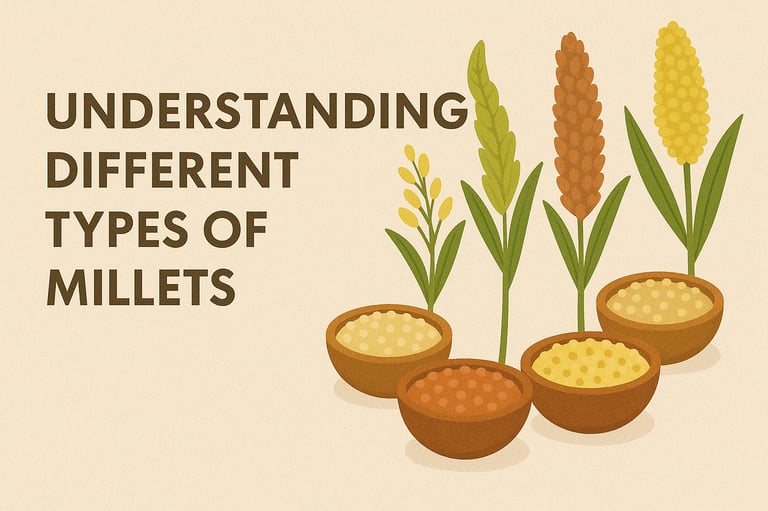Tips for a Gluten-Free Lifestyle with Millets
All millets are naturally gluten-free, making them an excellent alternative to wheat, barley, and rye. They provide essential nutrients that might be lacking in some processed gluten-free products.
MILLETS
11/7/20251 min read


Adopting a gluten-free lifestyle, whether by choice or necessity, can sometimes feel restrictive. However, with the inclusion of versatile and nutritious millets, you can enjoy a wide variety of delicious and healthy meals.
Why Millets are Great for Gluten-Free Diets
All millets are naturally gluten-free, making them an excellent alternative to wheat, barley, and rye. They provide essential nutrients that might be lacking in some processed gluten-free products.
Tips for Incorporating Millets:
Flour Power: Use millet flours (ragi, bajra, jowar) for baking bread, muffins, cookies, and pancakes. You might need to blend them with other gluten-free flours or use binders like xanthan gum for best results.
Whole Grain Goodness: Cook whole millets like foxtail or little millet as a substitute for rice or quinoa in pilafs, salads, and grain bowls.
Breakfast Boost: Start your day with millet porridge, upma, or even millet-based cereals.
Snack Smart: Look for or make millet-based snacks like crackers, puffs, and energy bars.
Read Labels: While millets are naturally gluten-free, always check labels on processed millet products to ensure they are certified gluten-free and not cross-contaminated.
Embracing millets can make your gluten-free journey more enjoyable, nutritious, and diverse. Experiment with different types and recipes to discover your favorites!
Millets, Cooking Oils & Essentials Straight from Odisha’s Heart
connectsustore@gmail.com
+91-9439490001
© 2025 SuStore. All rights reserved | This website is designed, developed, and maintained by SuStore | Unauthorised use, reproduction, or distribution of any content is prohibited | Contact for website business
Unit-4, Bhubaneswar, Odisha-751001
Visit Us


